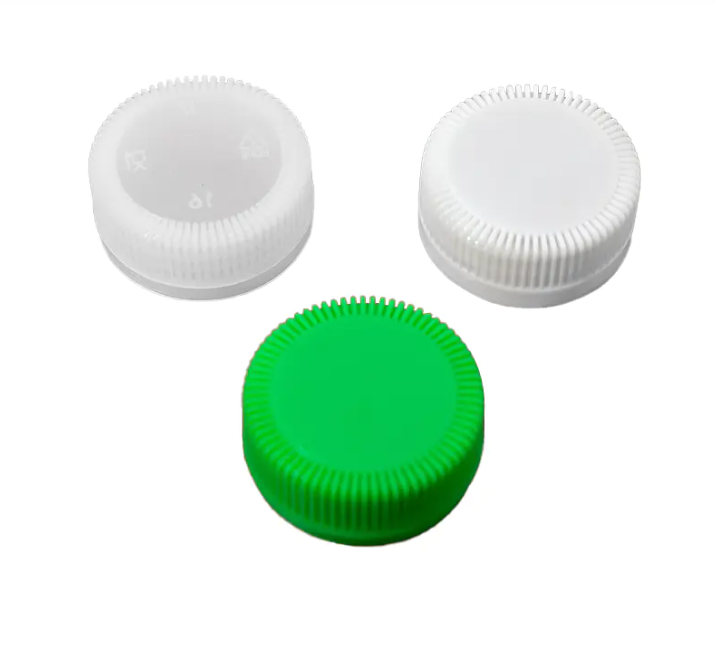chuangzhen@capping-machine.net

EN
The packaging industry has entered a stage where sustainability and innovation are closely connected, with manufacturers rapidly adapting to evolving demands. One of the clearest shifts is the use of alternative materials for caps, including biodegradable compounds, post-consumer recycled (PCR) plastics, lightweight plastics, and flexible polymers. Each of these materials introduces new challenges for sealing performance, durability, and compatibility with equipment such as the Capping Machine, which must continue to evolve to manage these material changes without reducing efficiency.

The global transition toward sustainable packaging is largely driven by environmental regulations and consumer preferences. Biodegradable caps made from plant-based resins, starch blends, or other compostable compounds behave differently under pressure compared to polyethylene or polypropylene. These caps may have lower rigidity, making them more susceptible to deformation during torque application and sealing. For manufacturers, this requires capping systems with adjustable pressure control and torque sensitivity to ensure caps remain intact without cracking or slipping.
PCR plastics present a different set of challenges. Due to variations in density and composition, caps made with recycled materials may not always deliver uniform strength or flexibility. This inconsistency requires equipment capable of adapting to a wider tolerance range. Modern capping machines increasingly integrate smart sensors and feedback systems that can adjust torque levels in real time. This innovation helps reduce cap defects and ensures that packaging remains tamper-resistant and leak-proof, even when material quality is less standardized.
Lightweight caps are now widely used in beverages and personal care products, designed to reduce material use and the overall environmental footprint. These caps, while efficient in terms of material consumption, often have lower structural strength. During high-speed production, traditional pressure or torque application may cause them to crack, misalign, or fail to seal properly. To address this, advanced capping equipment incorporates precision grippers, servo-driven torque heads, and soft capping mechanisms. The engineering behind these systems ensures secure closure while minimizing mechanical stress.
Material flexibility also introduces new considerations in design. Flexible caps, often made from thin polymers or composite blends, require machines capable of applying consistent pressure without deformation. The sealing surface itself is evolving, with many producers turning to multi-thread or shallow-thread designs to enhance closure reliability while accommodating weaker materials. For machine operators, this translates into ongoing adjustments, monitoring, and verification—making automation and digital control increasingly essential.
Beyond machinery, design adaptation plays a growing role. Cap geometries are being reengineered to optimize performance with alternative materials. Reinforcements, wall thickness adjustments, and improved sealing rings are widely adopted to balance durability and sustainability. These design changes influence how caps interact with capping equipment, requiring modular systems that adapt quickly to different cap types without long downtime. Quick-change tooling and automatic detection of cap variations are now key features of new-generation machines.
Consumer safety and regulatory compliance add another layer of complexity. In food, pharmaceuticals, and cosmetics, caps must not only seal effectively but also remain tamper-resistant and withstand transportation conditions. Biodegradable materials, in particular, may degrade faster during storage or exposure to moisture. Manufacturers are implementing shelf-life stability testing to ensure cap functionality across a product’s lifecycle. Capping machines now integrate inline inspection systems that validate seal integrity and remove defective units before they reach distribution.
Sustainability goals are reshaping collaboration across the value chain. Material scientists, cap designers, and machinery manufacturers are working together to align innovation. Partnerships between resin producers and machine engineers are driving the development of specialized cap resins tailored for optimized processing performance. At the same time, capping machine makers are customizing torque heads and closure systems to match the unique behaviors of these new resins. This integrated approach ensures sustainable materials do not compromise production reliability or speed.
The economic dimension is equally significant. While alternative materials may carry higher costs, the efficiency of the capping process directly impacts return on investment. Downtime, scrap, and product recalls can be costly, motivating companies to invest in adaptable machinery. Digital monitoring platforms track torque data, sealing performance, and machine output, enabling continuous process refinement. This reduces waste, optimizes performance, and enhances resilience as material trends continue to evolve.
Consumer expectations also play a central role. Buyers increasingly associate lightweight and biodegradable packaging with responsible brands, while still demanding reliability comparable to traditional packaging. Achieving this balance depends on combined progress in design and machine technology. For producers, evolving the capping process is not only about compliance but also about strengthening competitiveness in markets where environmental values shape purchasing decisions. Chuangzhen Machinery supports this transition with advanced capping machines that integrate adaptive torque systems, precision feeding mechanisms, and digital monitoring, enabling manufacturers to handle biodegradable, PCR, lightweight, and flexible caps efficiently while ensuring consistent quality across applications.
Copyright © Taizhou Chuangzhen Machinery Manufacturing Co., Ltd. All Rights Reserved.
